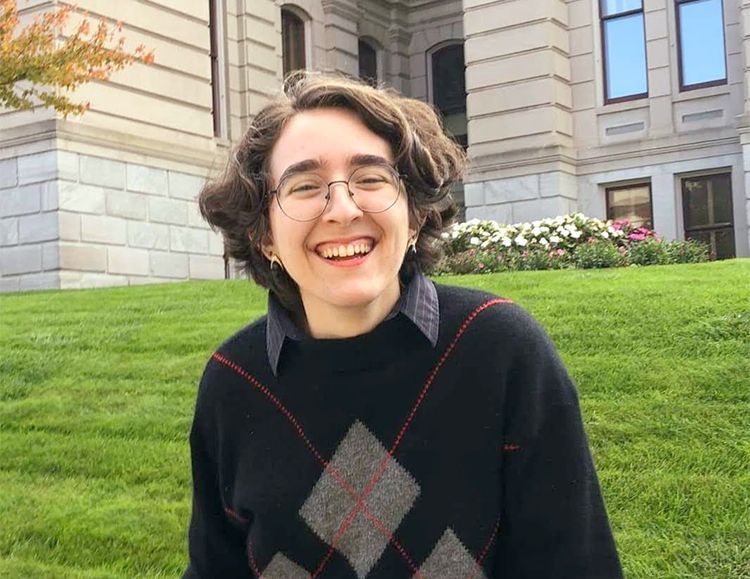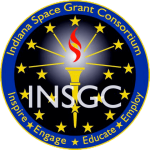INSGC offers multiple different types of funding. You can see all of the different types of funding opportunities we offer by looking below. Check out the information for Internships, Fellowships, Research Projects, PostDocs, and Faculty Funding. There are K-12 opportunities also so do not be afraid to take a look. Internships are offered all across the country for NASA. If you do not find what you are looking for here, I recommend using our career page for additional resources.
More information will be available for this page shortly.
INSGC Funding
Internships
The Indiana Space Grant Consortium offers a series of different Internship opportunities for multiple different candidates. Internships are for anyone in the STEM education fields. That includes Science, Technology, Engineering, and Mathematics. The #1 current internship that INSGC is offering is the Moon to Mars eXploration Systems and Habitation (M2M X-Hab) 2021 Academic Innovation Challenge. This internship deadline has now been adjusted to May 1st to allow more teams to get their applications ready. To learn about the different internship positions we are currently offering, check out the link below.
Graduate Fellowships
If you're a student in good standing at INSGC affiliate institutions, a U.S. citizen, and involved in STEM-related research or a STEM education project then you are eligible for Graduate Fellowships. The Graduate Fellowships come with different amounts of financial support depending on which category for fall between. The Masters Fellowships vary from $8,000-$9,000. While the Doctoral Fellowships range anywhere from $6,000-$20,000. To learn more information, view the guidelines, or even apply today, check out the link below!
Outreach and Research Projects
INSGC has a lot of different possible research projects and opportunities to submit proposals. The proposals for the 2021 year have now expired but opportunities could arise. Check out the research page often to find new opportunities, information, and guidelines.
NASA space grant funds research projects
Valparaiso University was awarded over $100,000 from the Indiana Space Grant Consortium (INSGC), a not-for-profit organization consisting of 23 schools and corporate affiliates. This money will fund five research projects for faculty and students over the summer. Since Valpo joined the INSGC in 1996, faculty have applied for grants to conduct research. They apply by submitting proposals relating to NASA’s basic objectives.
“[The proposals] all have to relate in some way to one of NASA's core objectives. So, if you look at the titles of the grants, they may relate to things like the growth of organisms in space or something having to do with that,” said Assistant Director of Student Research Stan Zygmunt.
NASA gave out the grants to develop and train the next generation of scientists in several disciplines.
“And so these are people that NASA wants to support, so that they can build up national infrastructure for American science,” Zygmunt said.
The projects funded through these grants are part of Valpo’s Summer Undergraduate Research Program, a summer internship for students. As the INSGC is a subsidiary of NASA, the program is primarily for students in STEM majors. The internship is paid and provides free summer housing.
More importantly, it gives undergraduate students an opportunity to devote time to research something in which they’re interested.
“Having these experiences for a student, I think is very important, not only for students who want to go on and get a Masters or PhD, but for any student who's interested in learning more deeply about a subject and understanding how research works. Or you just get to know the area in a much deeper level than you would during the year in classes,” Provost Eric Johnson said.
Fourteen undergraduate Valpo students completed the internship this year in subjects such as biology, chemistry, engineering, astronomy and physics. Two students from Ivy Tech Community College in Valparaiso, IN were also accepted to join.
The projects covered a range of topics, with Zygmunt explaining that all of the research revolved around resolving practical issues in space travel. One included creating compounds to combat superbugs on the International Space Station.
“The application of that connection with space was ‘Hey you might be up in the space station for long periods of time and what sorts of odd organisms and bugs might we get up there’. Somebody gets sick, you can't bring your doctor up there all of a sudden to treat it, so you've got to develop resources that could be helpful in those environments,” Zygmunt said.
For astronomy students, the grants provide half the amount of funding for the Southeastern Association for Research in Astronomy, through which Professor of Physics and Astronomy Todd Hillwig is able to lead students in operating three off-site telescopes, which are shared between multiple universities.
“There’s a telescope in Arizona, there's a telescope in Chile, and another one in the Canary Islands, that Professor Hillwig in our department is able to use to do observations for his research and there's an annual fee for that. The Space Grant gives us partial support to pay that fee,” Zygmunt said.
In addition, researchers attended weekly workshops on various STEM topics. These included “Diversity & Inclusion,” “Oral Presentations,” “Ethics in Research” and “Abstracts & Posters.”
All of the work conducted throughout the internship culminated with the Summer Interdisciplinary Research Symposium on July 23. The symposium allowed students to present their research to a larger audience and also featured guest speaker Dr. Karin Calvinho of startup company RenewCO2.
“The whole purpose is to highlight, to showcase all that you've done over the summer. It gives the students a great opportunity to talk with other faculty, with the administrators about what they did,” Johnson said.
Zygmunt is hoping the internship will be open to a broader range of studies in future years than just STEM disciplines.
“And so, we're always interested and excited about faculty members in other parts of [the] university who want to do research with students in the summers. It's just part of the culture in science and engineering, but [we’re] hoping to see that expand to other areas,” Zygmunt said.
For those interested, the student researchers will be presenting their work at a Fall Symposium. It will take place Oct. 8 at 3 p.m. in the Center for the Sciences.
Recent Award
Ilana Bromberg awarded INSGC graduate fellowship

Ilana Bromberg, pictured here in front of the Tippecanoe County Court House, has been awarded a 2022 Indiana Space Grant Consortium Graduate Fellowship. She looks forward to using the funds to travel to conferences and meet with fellow scientists. Photo provided by Bromberg.
The Indiana Space Grant Consortium (INSGC) has awarded Ilana Bromberg an INSGC Graduate Fellowship. The INSGC is one of the 52 Consortia that participate in the National Space Grant College and Fellowship Program. In the state of Indiana, INSGC is a source of NASA-related information, awards and programs.
Bromberg has a duel interest with two departments at Purdue University’s College of Science: the Department of Physics and Astronomy and the Department of Earth, Atmospheric, and Planetary Sciences (EAPS). She is advised by Dr. Lucy Flesch, Senior Associate Dean for Faculty Affairs of the Purdue University College of Science and Professor of Geophysics with the Purdue EAPS. Bromberg is originally from Long Island, New York and studied at Stony Brook University for her undergraduate degree where she majored in both physics and astronomy.
“I'm just about to start my second year as a PhD student; my main physics interests have always been in applications and interdisciplinary work rather than pure theory, but I didn't really discover geophysics until I was applying to graduate programs,” says Bromberg. “My past experience was in high energy physics and plasma physics, which I do still like, but I realized that I was more interested in applications of what I was studying than the pure subject itself. I always really enjoyed earth science so the fact that I could take my physics background and utilize it towards studying tectonic plate movement has been super exciting.”
She learned about the INSGC graduate fellowship from her fellow graduate students and her advisor helped with feedback on her application.
“I found out that I got the award late in the process, so it's been a pleasant surprise. This is the first time I've been selected for any grants or fellowships (and I've applied to quite a few) so it's definitely super exciting,” says Bromberg. “I really want to use the funds towards travel for conferences, as I've never been to one before and am looking forward to networking with other scientists.”
As for post graduate school, Bromberg is still unsure what the future holds, but one this is for sure: the sky is the limit.
“I would love a position at a national lab or other science-based government agency, but I am also open to the idea of going into industry, especially an industry focused on renewable energy or something similar,” she says. “I'm still pretty early in the program though so a lot can change!”
About the Department of Earth, Atmospheric, and Planetary Sciences at Purdue University
The Department of Earth, Atmospheric, and Planetary Sciences (EAPS) combines four of Purdue’s most interdisciplinary programs: Geology & Geophysics, Environmental Sciences, Atmospheric Sciences, and Planetary Sciences. EAPS conducts world-class research, educates undergraduate and graduate students, and provides our college, university, state and country with the information necessary to understand the world and universe around us. Our research is globally recognized, our students are highly valued by graduate schools, employers, and our alumni continue to make significant contributions in academia, industry, and federal and state government.

